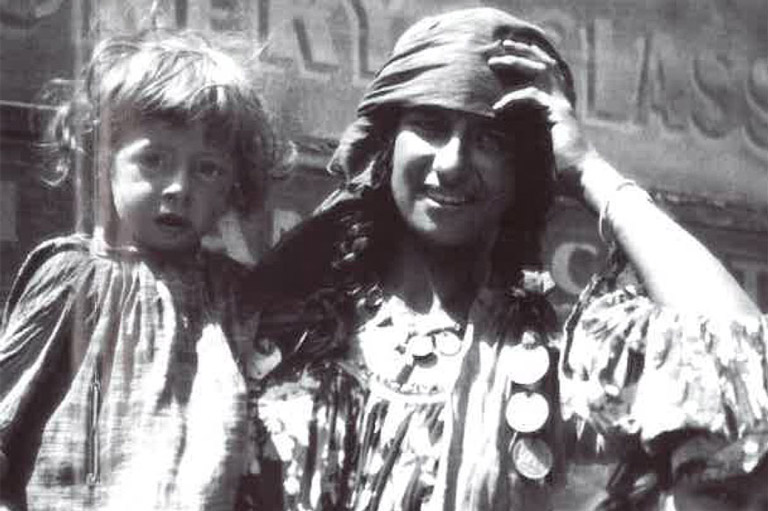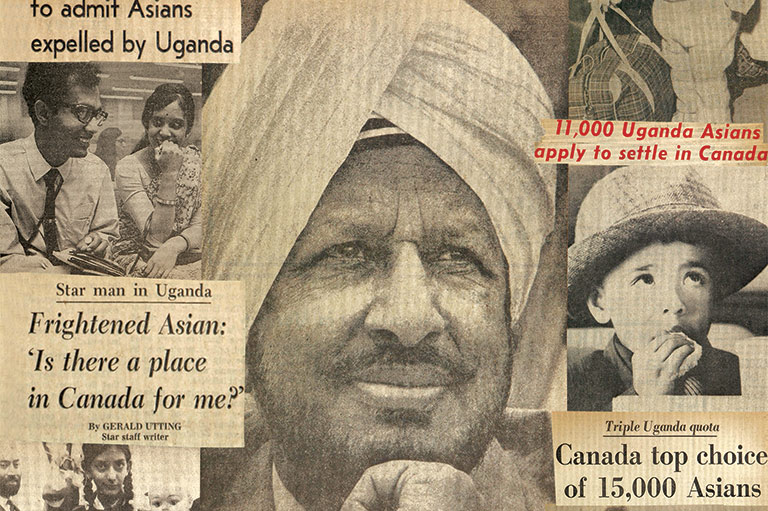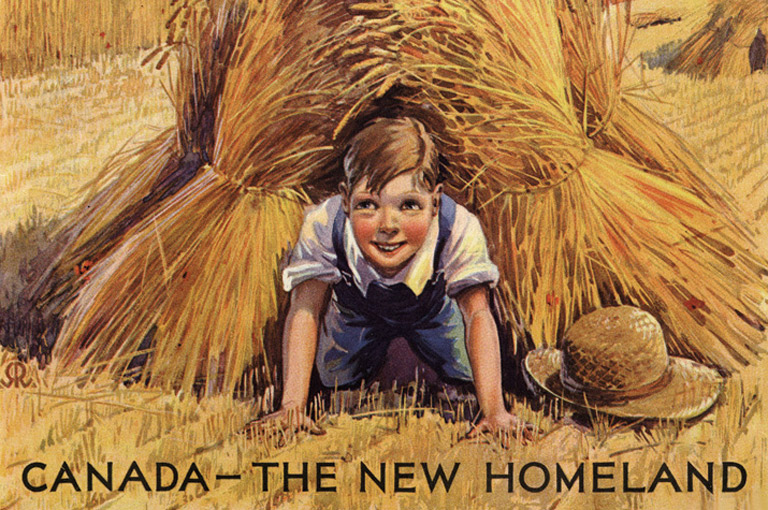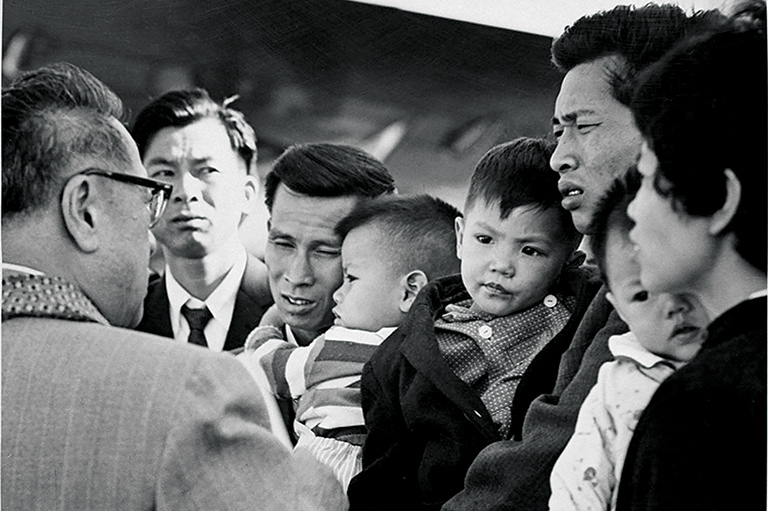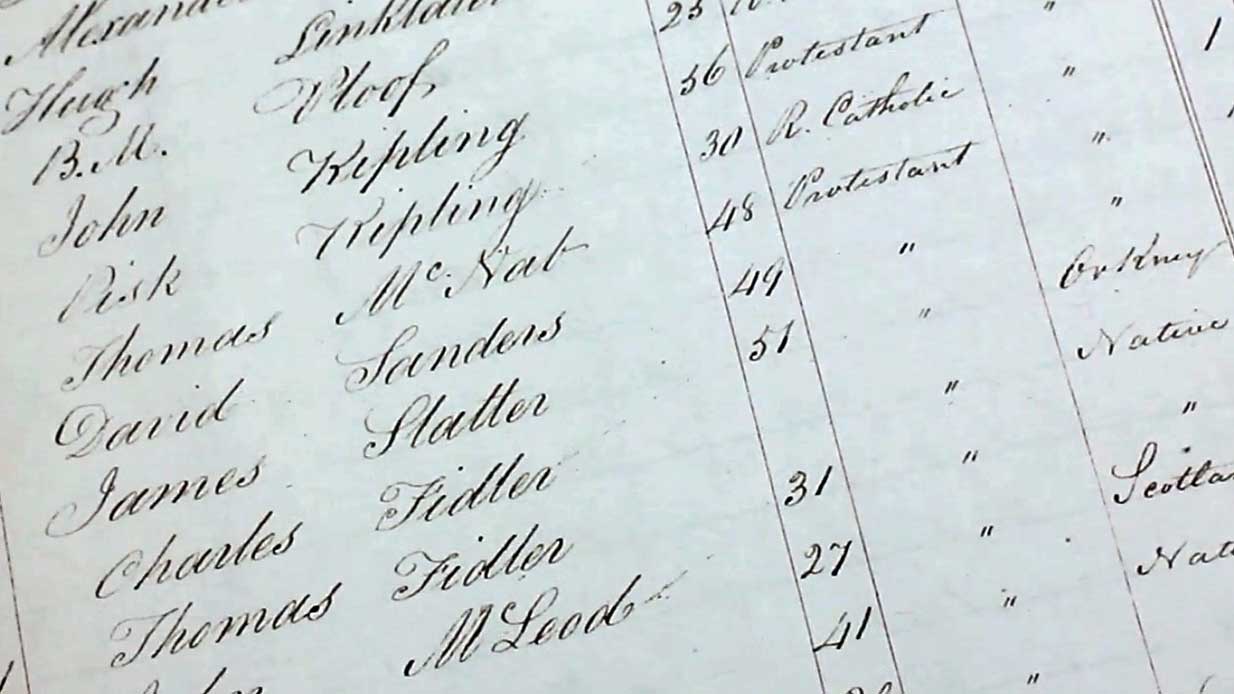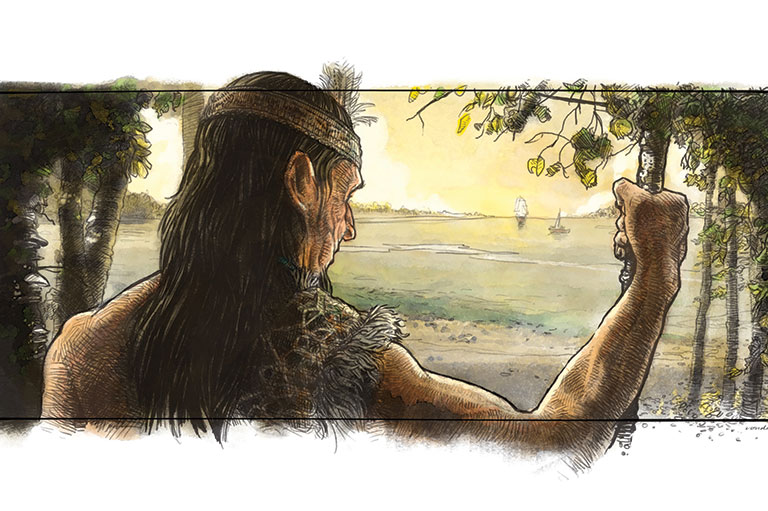Canada's Refugees
Racism and inclusion. Xenophobia and welcome. It’s all there in how Canada has treated refugees coming to our country. As you can read in George Melnyk’s article “The Country of Half Welcomes” in the August-September 2018 issue of Canada’s History magazine, there is much to be ashamed of but much to be proud of, too. Here are some of the major milestones along the way.
Article continues below...
-
 An encampment of Loyalists at Johnstown (now Cornwall, Ontario), June 6, 1784, as sketched by James Peachey.Library and Archives Canada
An encampment of Loyalists at Johnstown (now Cornwall, Ontario), June 6, 1784, as sketched by James Peachey.Library and Archives Canada -
 Soldiers supporting the coup led by General Augusto Pinochet take cover as bombs are dropped on the presidential palace, La Moneda, on September 11, 1973.The Canadian Press
Soldiers supporting the coup led by General Augusto Pinochet take cover as bombs are dropped on the presidential palace, La Moneda, on September 11, 1973.The Canadian Press -
 Five members of the American Deserters Committee pose for a photo that originally accompanied “Why They Won’t Fight,” a story in Weekend magazine in May 1969. From left to right: Larry Svirchev, Jim Weeks, Paul Petri, Steve Argo, John Nicols.Library and Archives Canada
Five members of the American Deserters Committee pose for a photo that originally accompanied “Why They Won’t Fight,” a story in Weekend magazine in May 1969. From left to right: Larry Svirchev, Jim Weeks, Paul Petri, Steve Argo, John Nicols.Library and Archives Canada -
 Vietnamese refugees scramble from a sinking boat at Kuala Terengganu, Malaysia, in December 1978.The Canadian Press
Vietnamese refugees scramble from a sinking boat at Kuala Terengganu, Malaysia, in December 1978.The Canadian Press -
 Refugee Nguyen Thi Yen holds her sick child as she and forty-eight other refugees arrive at Khlong Yai in Thailand in 1977 after making the perilous voyage from Vietnam in a fishing boat.The Canadian Press
Refugee Nguyen Thi Yen holds her sick child as she and forty-eight other refugees arrive at Khlong Yai in Thailand in 1977 after making the perilous voyage from Vietnam in a fishing boat.The Canadian Press -
 Refugee claimants from Eritrea, bound for Canada, cross the border between New York state and Quebec in March 2017.The Canadian Press
Refugee claimants from Eritrea, bound for Canada, cross the border between New York state and Quebec in March 2017.The Canadian Press
1755–1764
The Acadians are expelled from Canada’s present-day Maritime provinces by the English; most are relocated in Louisiana.
1770–1779
Quakers come to what is now southern Ontario as refugees from the American Revolution. More arrive in the 1820s escaping religious persecution in England and Ireland.
1775–1783
United Empire Loyalists flee to the remaining British North American Colonies after the American Revolution.
With 7 uniquely curated newsletters to choose from, we have something for everyone.
18th and 19th centuries
The closure of common lands in Scotland, known as the Highland Clearances, displaced many families who made their way to Canada.
1830–1860
After Poland is annexed by Russia, many Poles flee to North America, including Canada, to escape economic, political, and military reprisals.
1847
Hundreds of thousands of Irish arrive, driven out by starvation during the potato famine. With passage to Canada cheaper than to the United States, Canada receives many of the most destitute.
1870
Louis Riel flees Canada, seeking asylum in North Dakota following the North-West Resistance. Gabriel Dumont follows suit in 1885.
1870s
After the Battle of Little Bighorn, Chief Sitting Bull and the Sioux head to the Canadian prairies. They return to the United States after the Canadian government refuses to recognize them as a migratory people or to grant them land for a reserve.
1870–1914
European Jews come to Canada seeking religious, political, and social refuge as anti-Semitism grows in Eastern Europe and Russia.
1899
More than 7,500 Doukhobors arrive in Canada to escape persecution in Russia, aided by author Leo Tolstoy and Canadian pacifist groups such as the Quakers.
Advertisement
1900–1939
Thousands of Ukrainians seek refuge from religious and political repression in their civil war-ravaged homeland after the Soviets invade. In 1932 the Holodomor, a devastating famine, drives more Ukrainians to Canada.
1914
The Komagata Maru arrives in Vancouver, but its Sikh, Muslim, and Hindu passengers are denied entry into Canada, despite being British subjects.
1920–1927
Thousands of Mennonites, fleeing religious and ethnic persecution in the new Soviet Union, are allowed into Canada.
1939
The MS St. Louis and its 937 Jewish passengers, fleeing fascism and Nazism, is turned away first from Cuba, the United States, and then Canada. The MS St. Louis returned to Europe, docking in Antwerp, Belgium and its passengers dispersed to Belgium, France, the Netherlands, and the United Kingdom. Of those onboard ship, 254 passengers were sent to concentration camps and did not survive to the end of the Second World War.
1947–1952
About 165,000 people displaced by the Second World War, most of them refugees, arrive in Canada.
1956
After the Hungarian Revolution, thirty-seven thousand Hungarians flee to Canada to escape communist rule.
Save as much as 40% off the cover price! 4 issues per year as low as $29.95. Available in print and digital. Tariff-exempt!
1971–1976
Fearing economic instability and persecution following the liberation of East Pakistan (now Bangladesh) hundreds of Bengalis seek refuge in Canada.
1965–1975
Conscientious objectors from the United States head to Canada to escape the draft during the Vietnam War. Most were educated men and their families who easily gained entry as regular immigrants.
1971–1972
South Asians including Ismailis are driven out of Africa because of their race, religion, and economic status. The 5,700 refugees accepted by Canada represent the first large group of non-white refugees to arrive en masse in Canadian history.
1973–1978
Nearly thirteen thousand Chileans seek refuge in Canada to escape persecution and authoritarian rule after General Augusto Pinochet seizes power.
1979–1980
More than sixty thousand refugees from Cambodia, Laos, and Vietnam, often referred to as “boat people”, are resettled in Canada.
1992–1997
Nearly thirteen thousand Bosnian refugees enter Canada to escape ethnic cleansing after the breakup of Yugoslavia.
1999–2001
More than seven thousand Kosovar refugees are airlifted to military bases in eastern Canada to escape a brutal civil war.
2000–2011
Canada resettles 3,900 Karen refugees from Thailand, Myanmar, and Burma.
2009–2015
More than twenty-five thousand Iraqi refugees resettle in Canada, representing a small portion of the more than two million who fled to neighbouring Jordan and Syria.
2015–present
Canada welcomes more than forty thousand Syrian refugees. They fled Syria to escape the full-scale civil war that grew out of a peaceful uprising that was brutally repressed by President Bashar al-Assad.
2016
Canada commits to accepting 3,500 refugees from Sudan, primarily Eritreans and some Ethiopians.
2017–present
After warnings that the United States would end protected status for Haitians who sought refuge in the United States from the devastation of the 2010 earthquake, thousands of Haitians cross into Quebec, seeking refuge. Asylum-seekers from other countries follow suit. In the first four months of 2018, 7,500 claimants use this method to enter Canada, with higher numbers anticipated during warm weather.
Thanks to Section 25 of the Canadian Charter of Rights and Freedoms, Canada became the first country in the world to recognize multiculturalism in its Constitution. With your help, we can continue to share voices from the past that were previously silenced or ignored.
We highlight our nation’s diverse past by telling stories that illuminate the people, places, and events that unite us as Canadians, and by making those stories accessible to everyone through our free online content.
Canada’s History is a registered charity that depends on contributions from readers like you to share inspiring and informative stories with students and citizens of all ages — award-winning stories written by Canada’s top historians, authors, journalists, and history enthusiasts.
Any amount helps, or better yet, start a monthly donation today. Your support makes all the difference. Thank you!
Themes associated with this article
Advertisement



